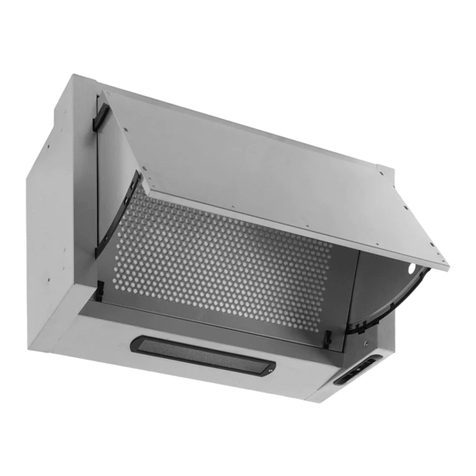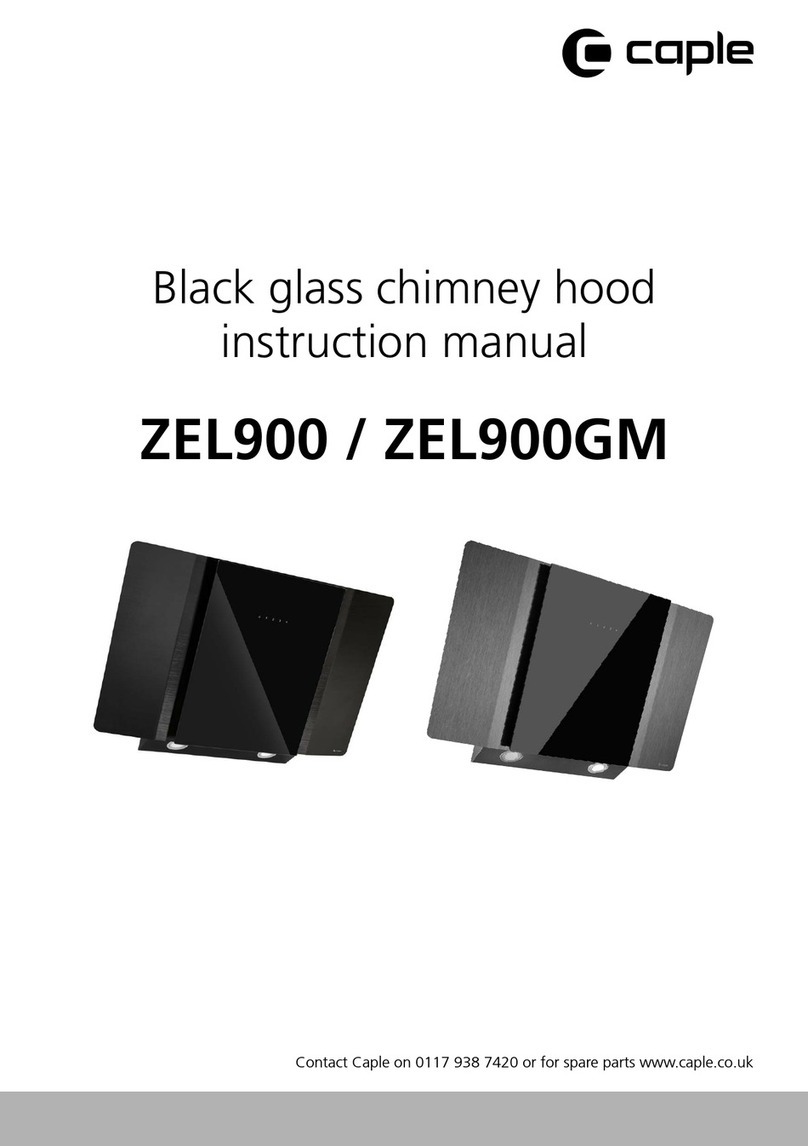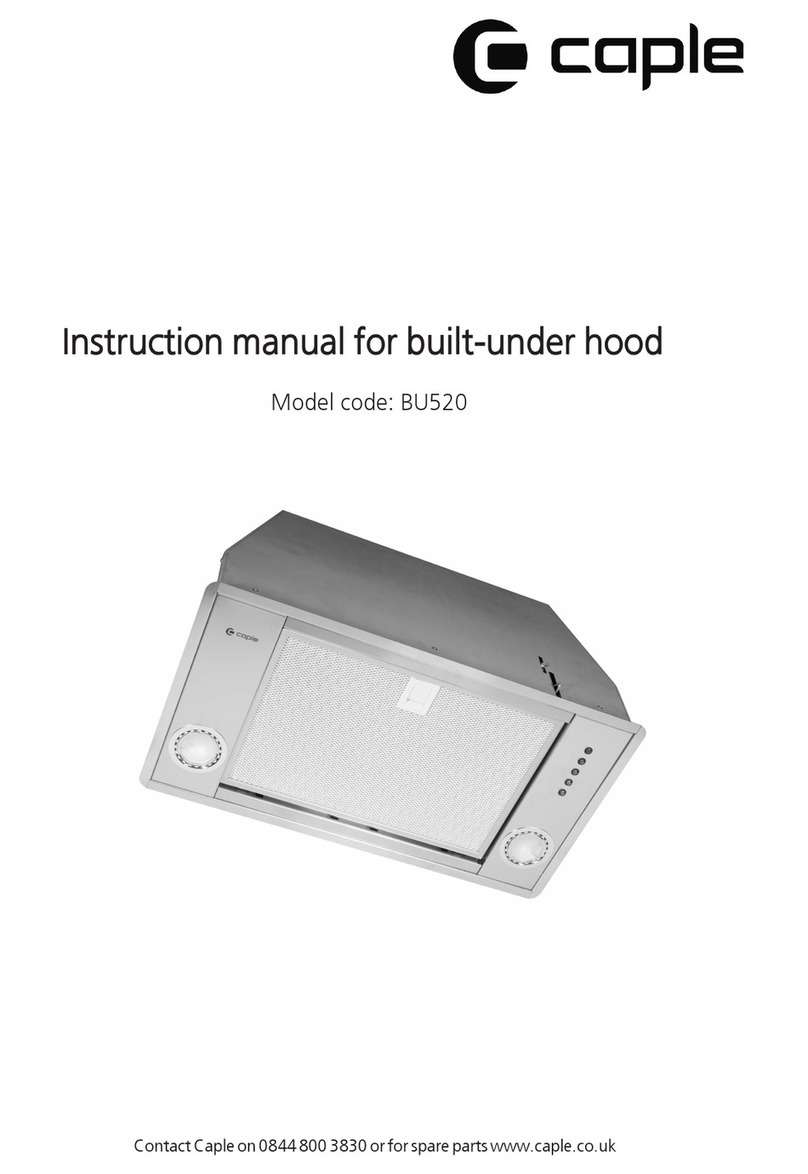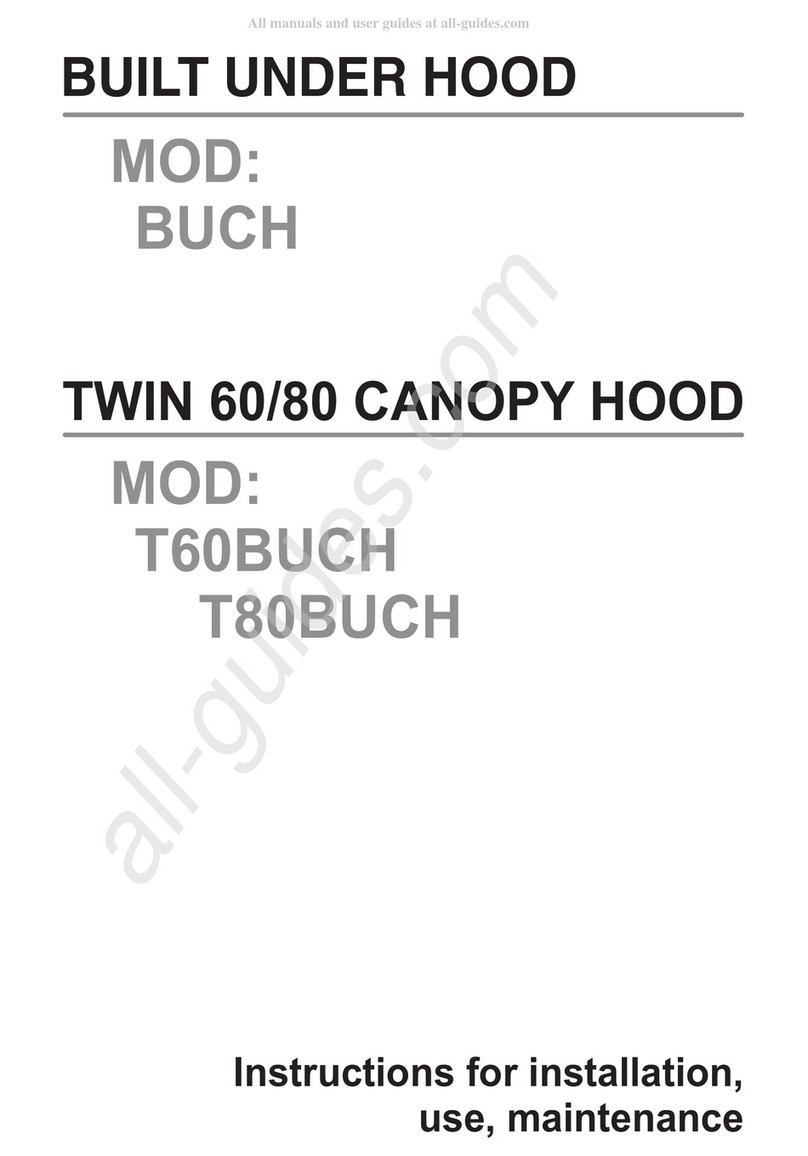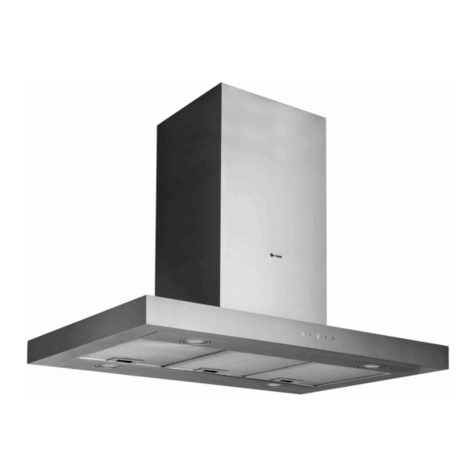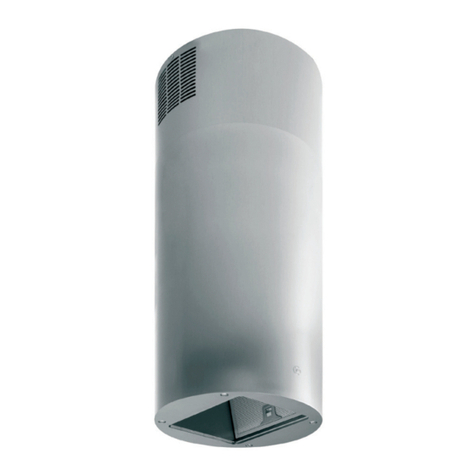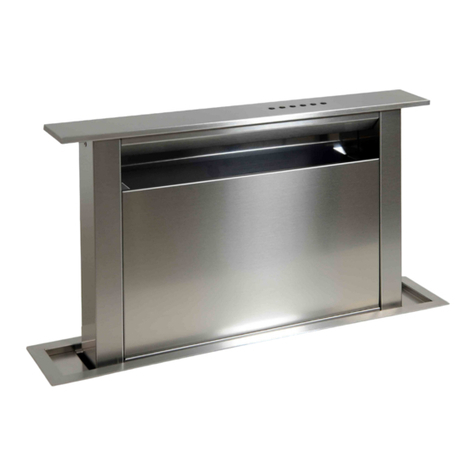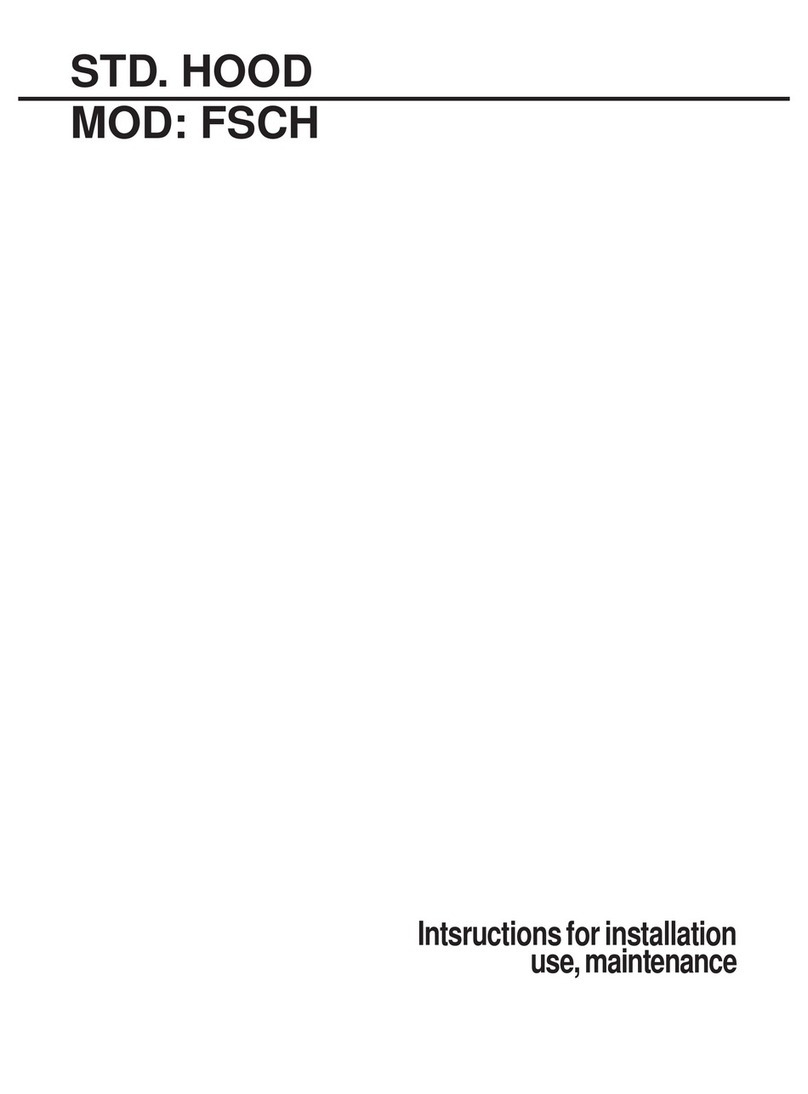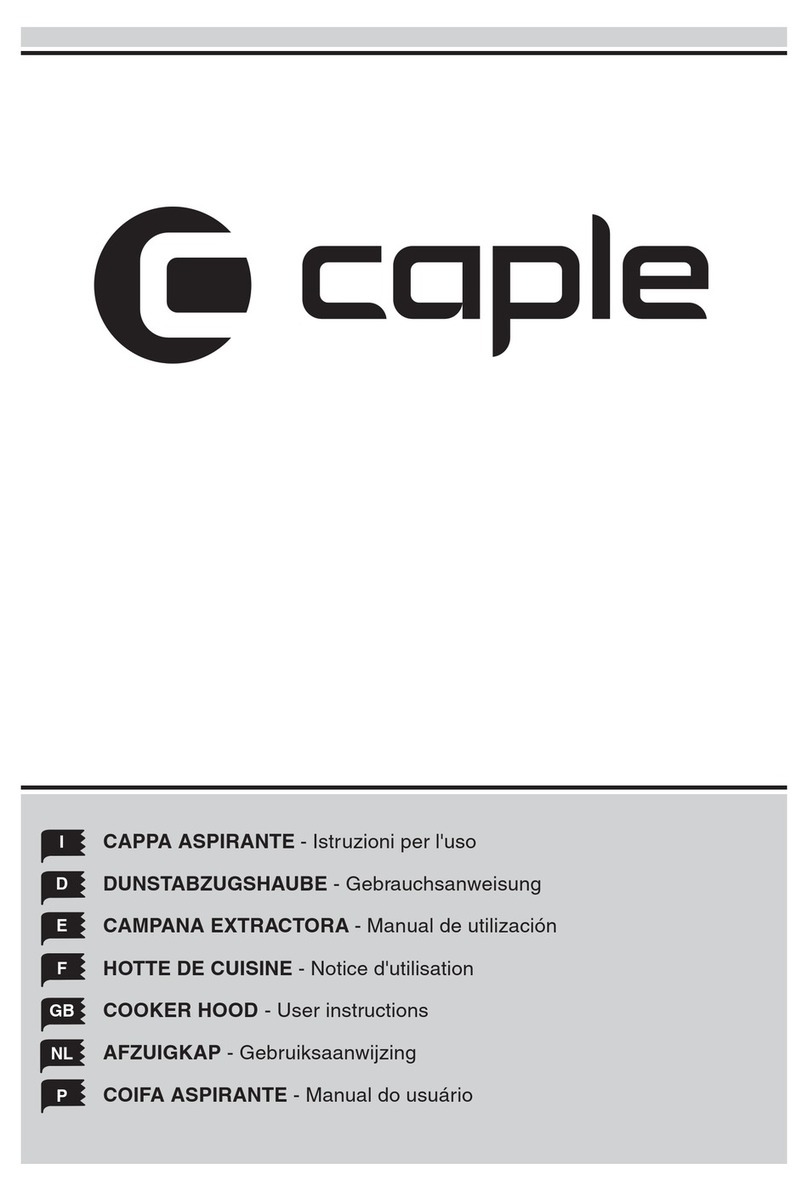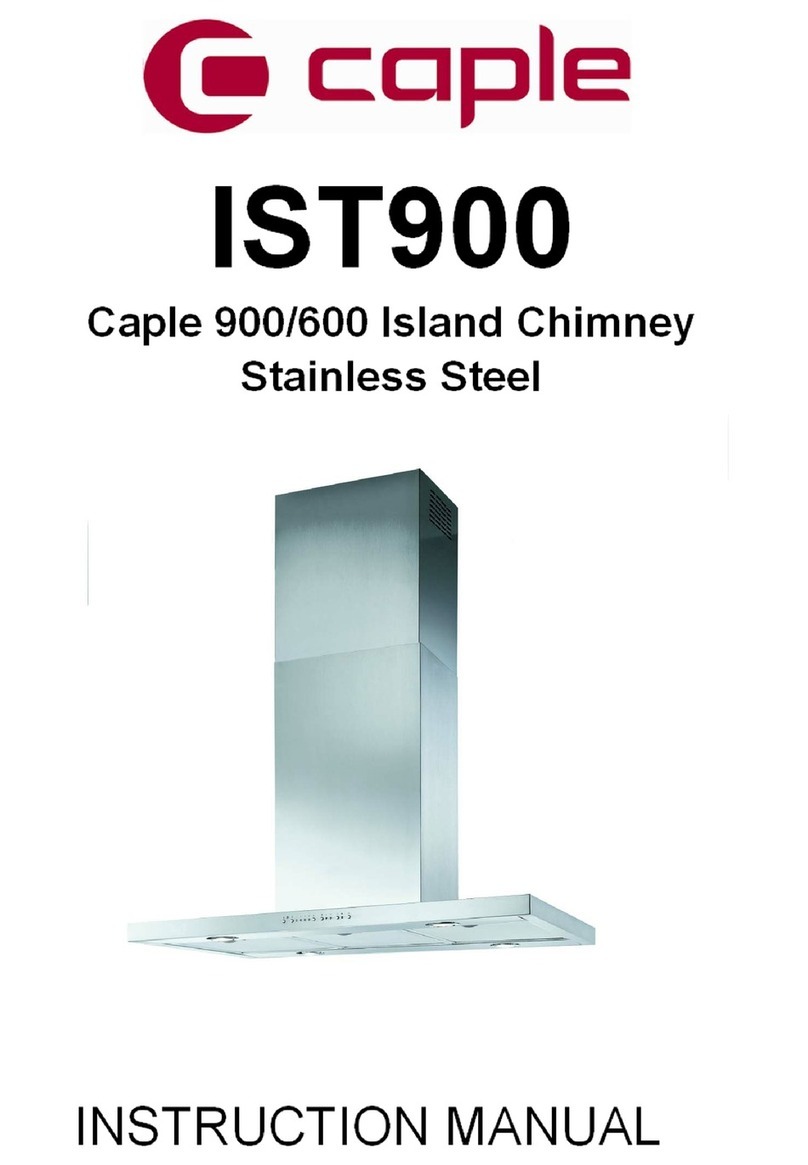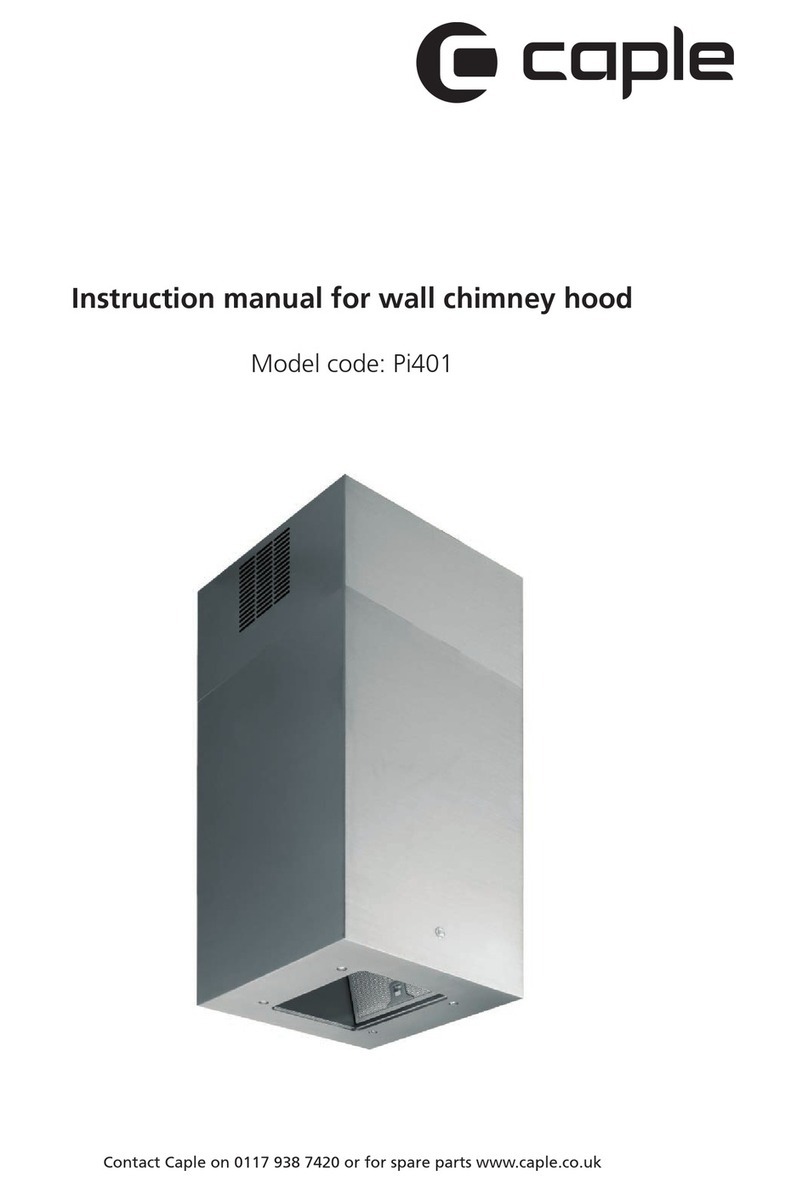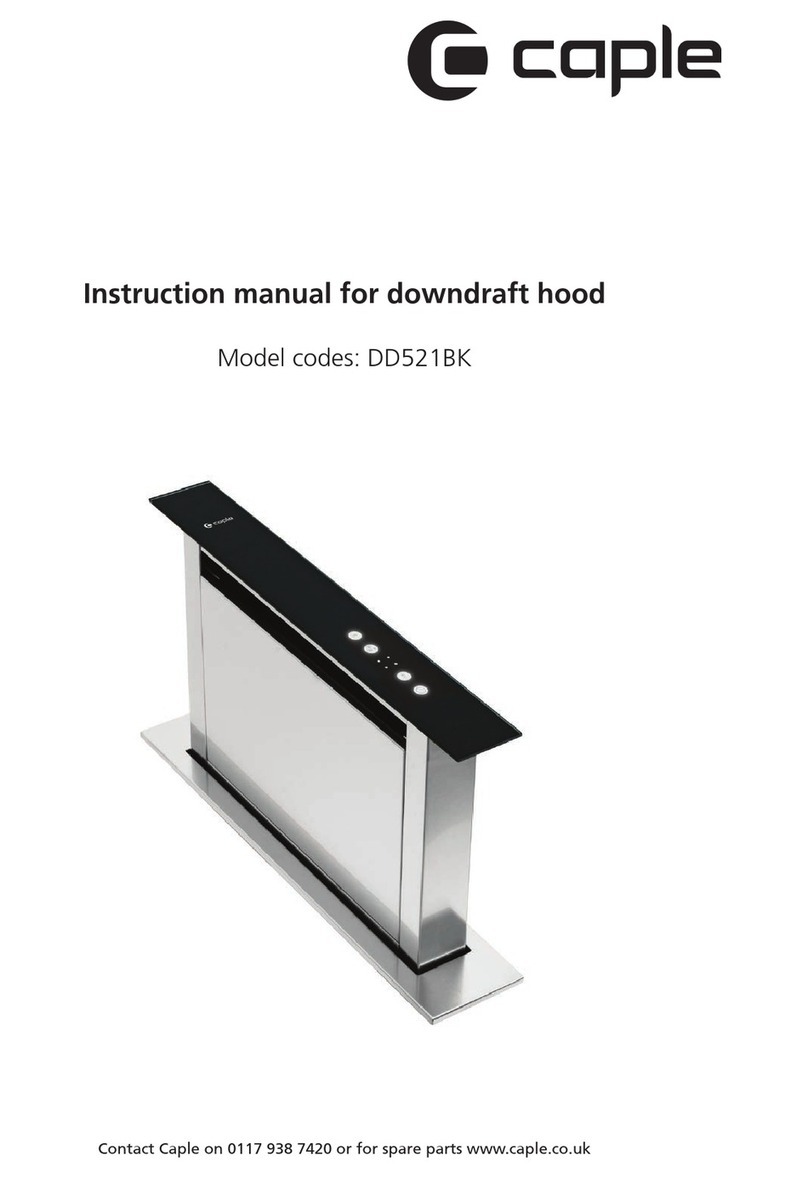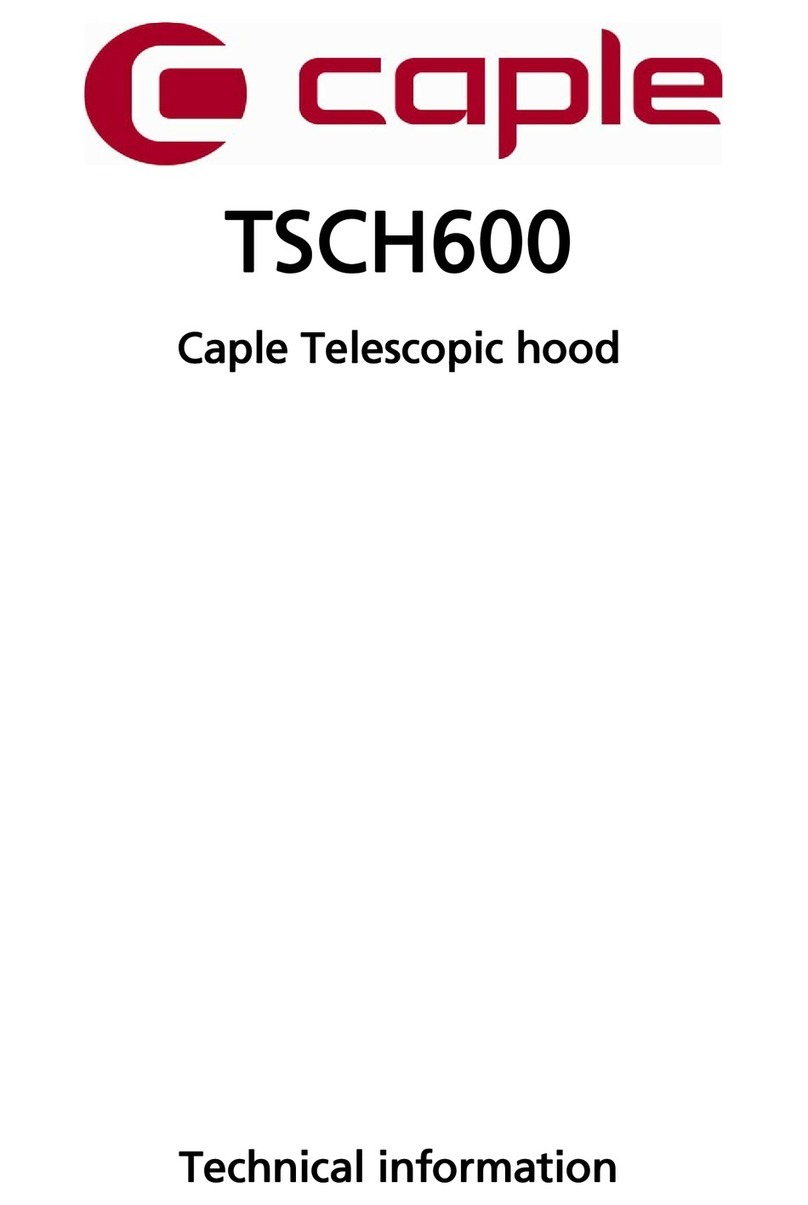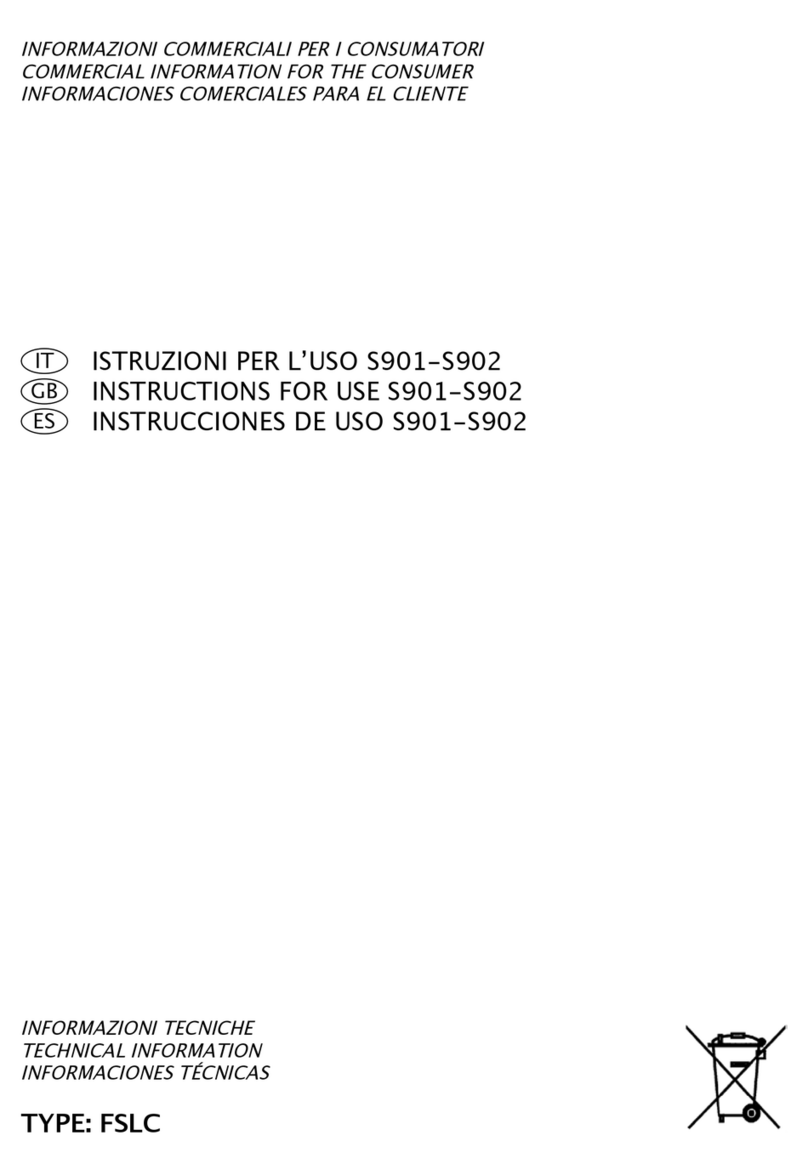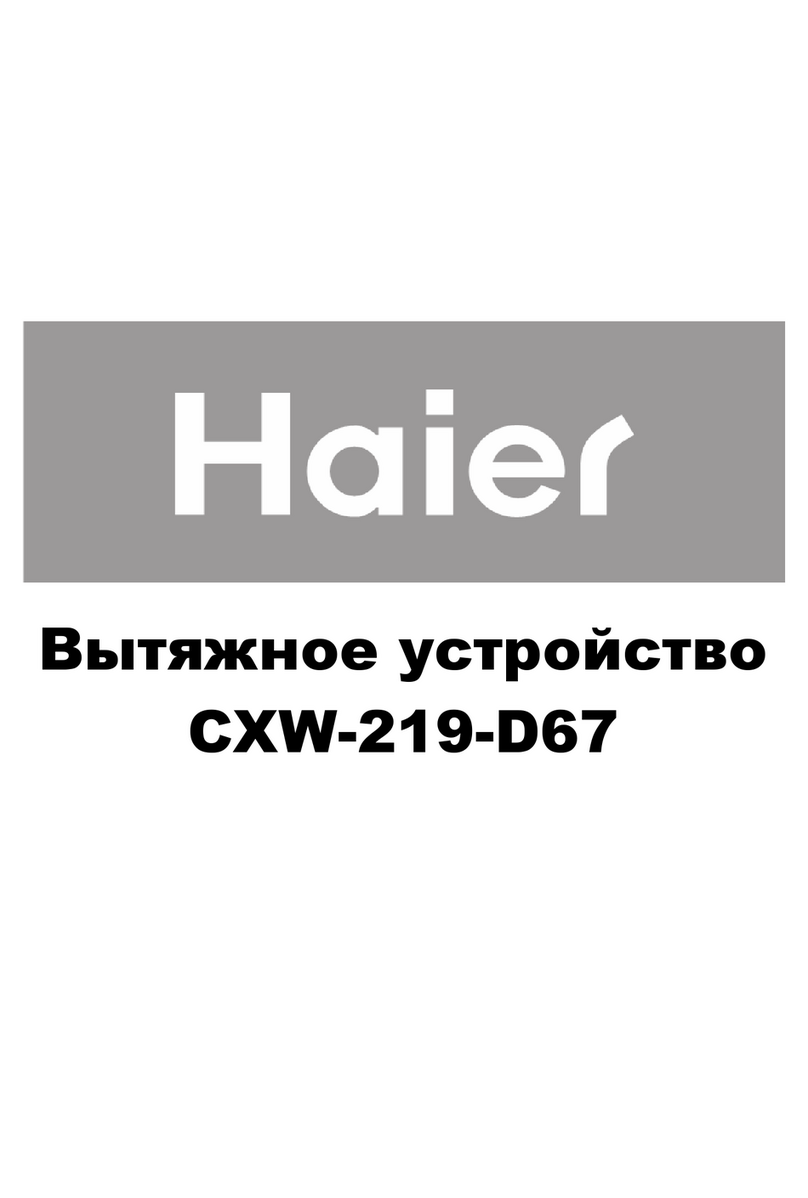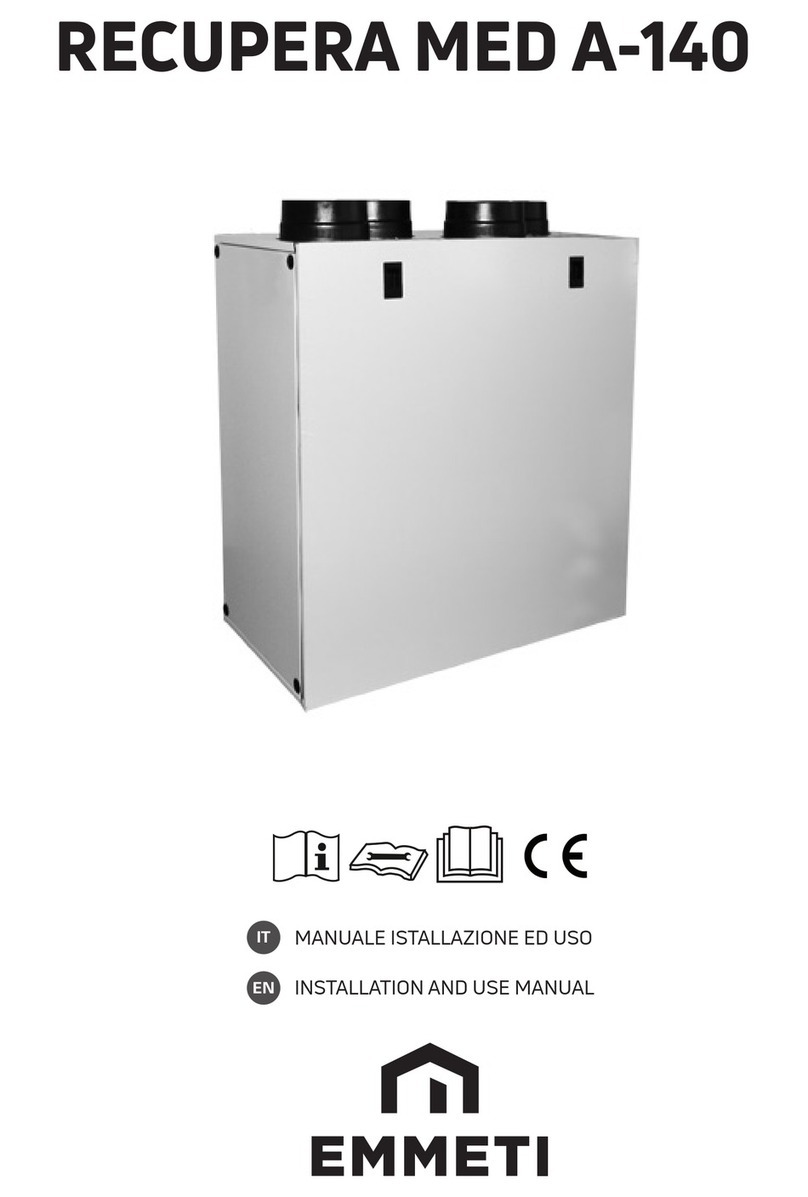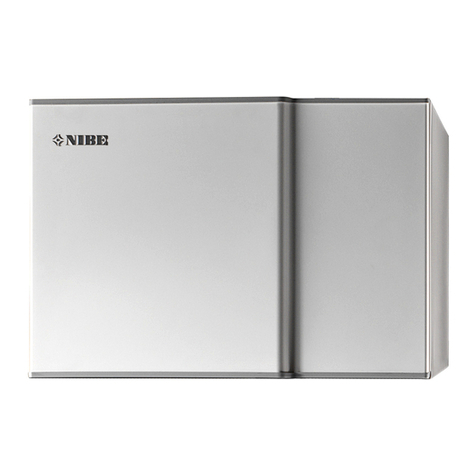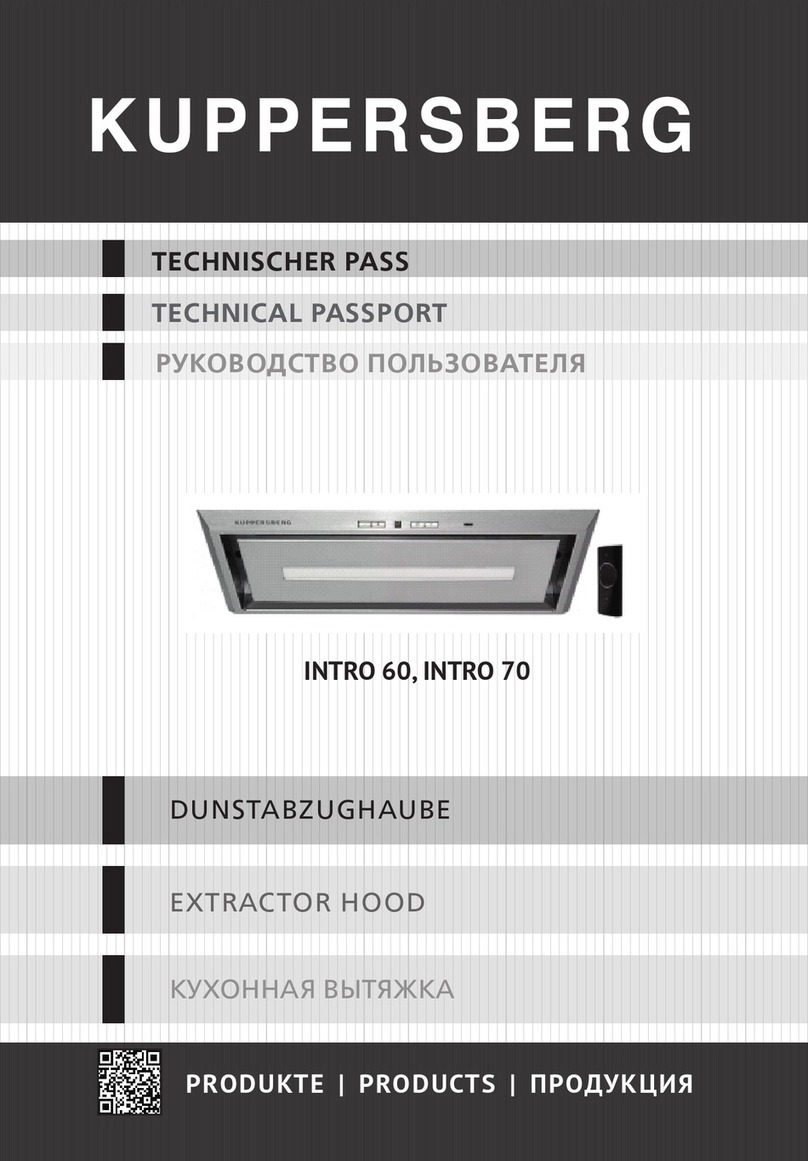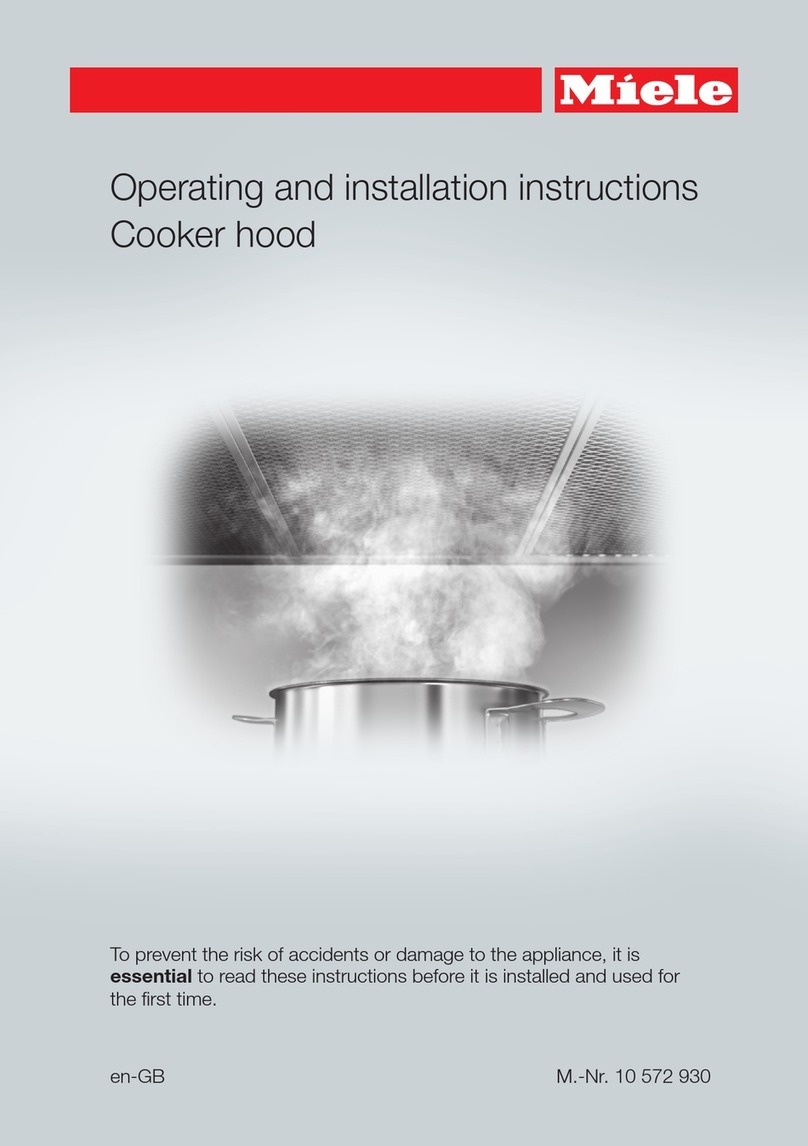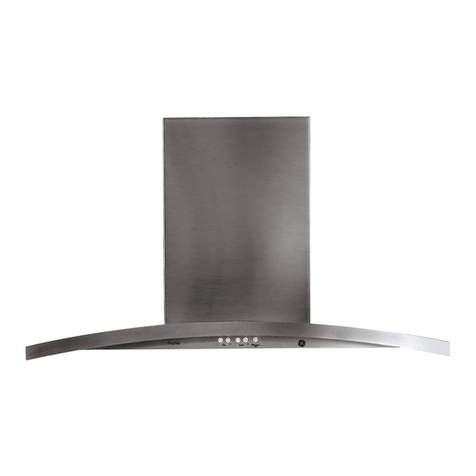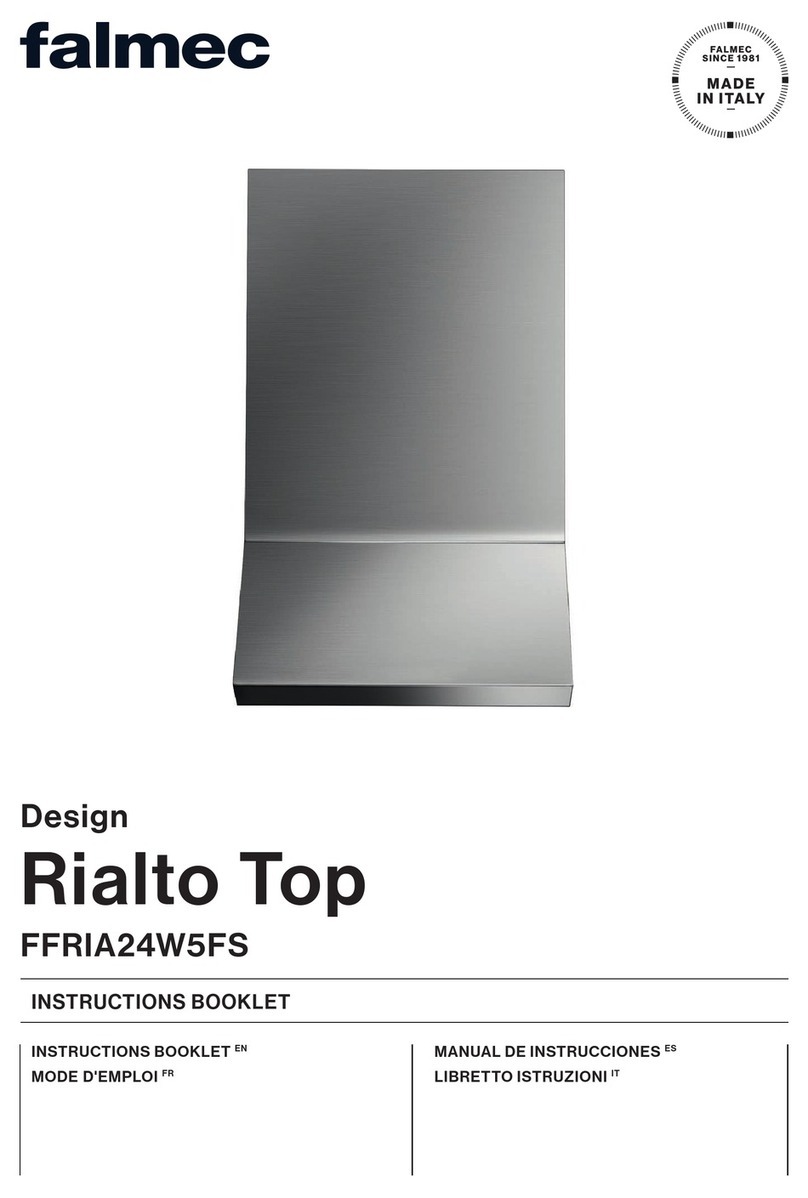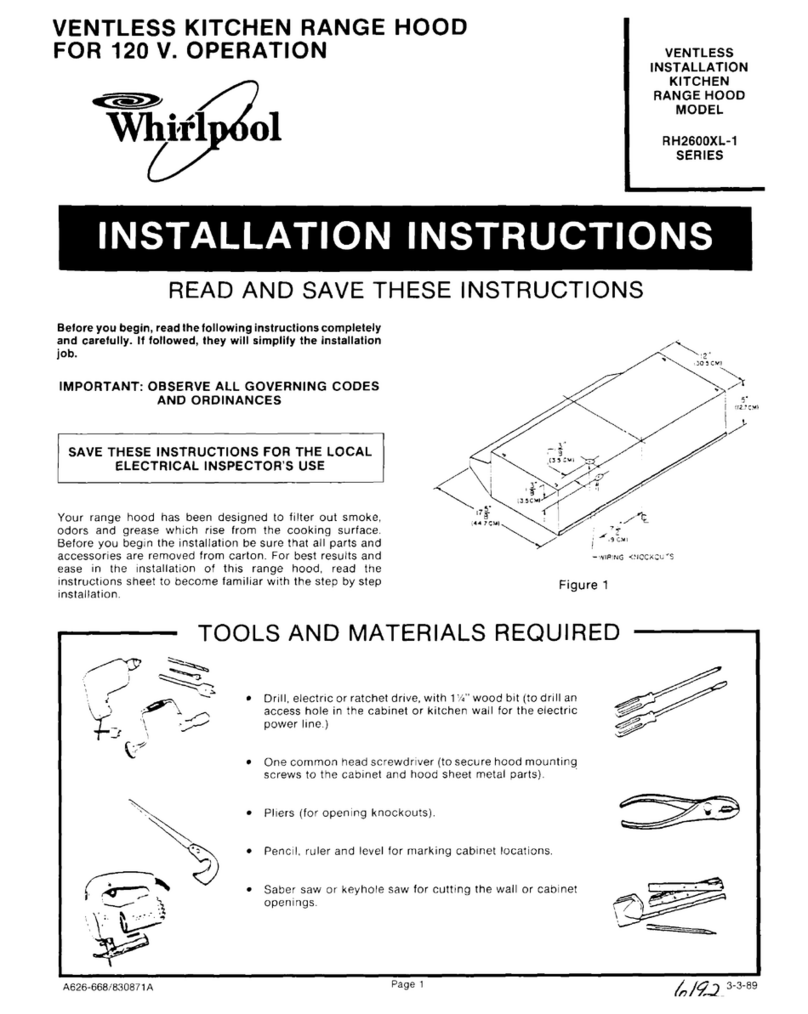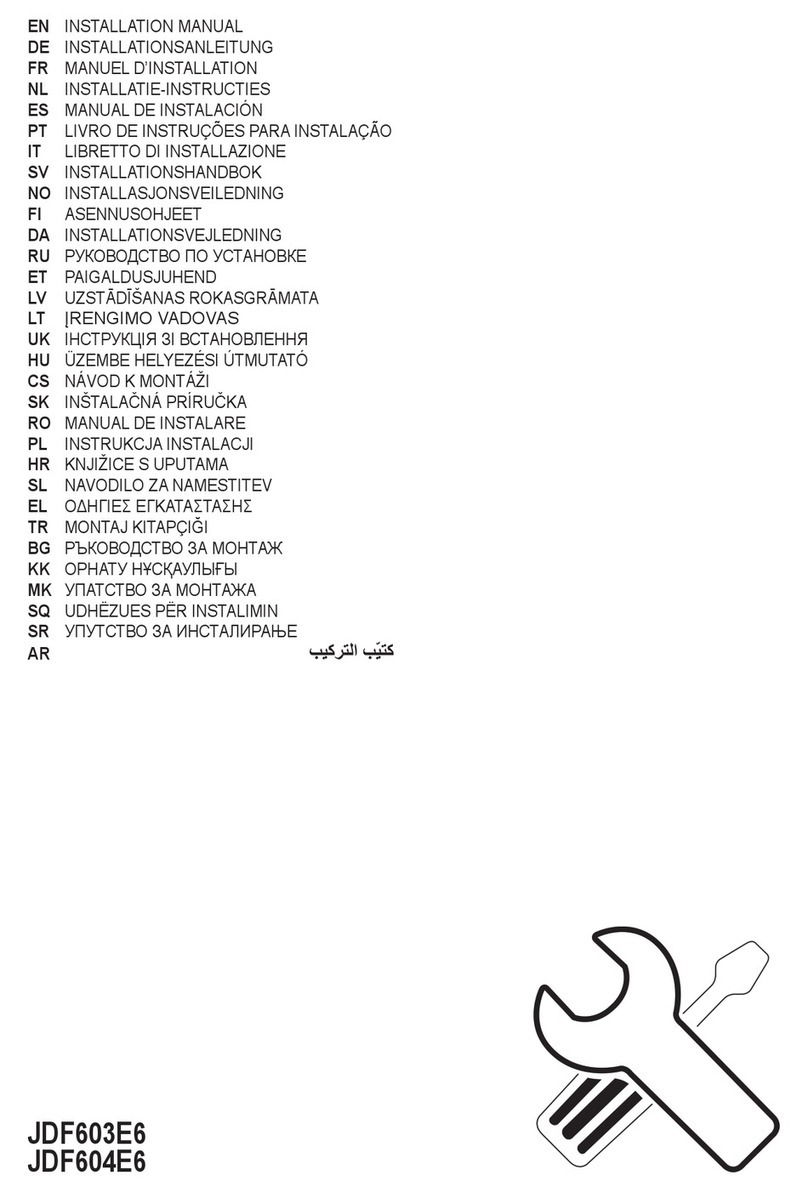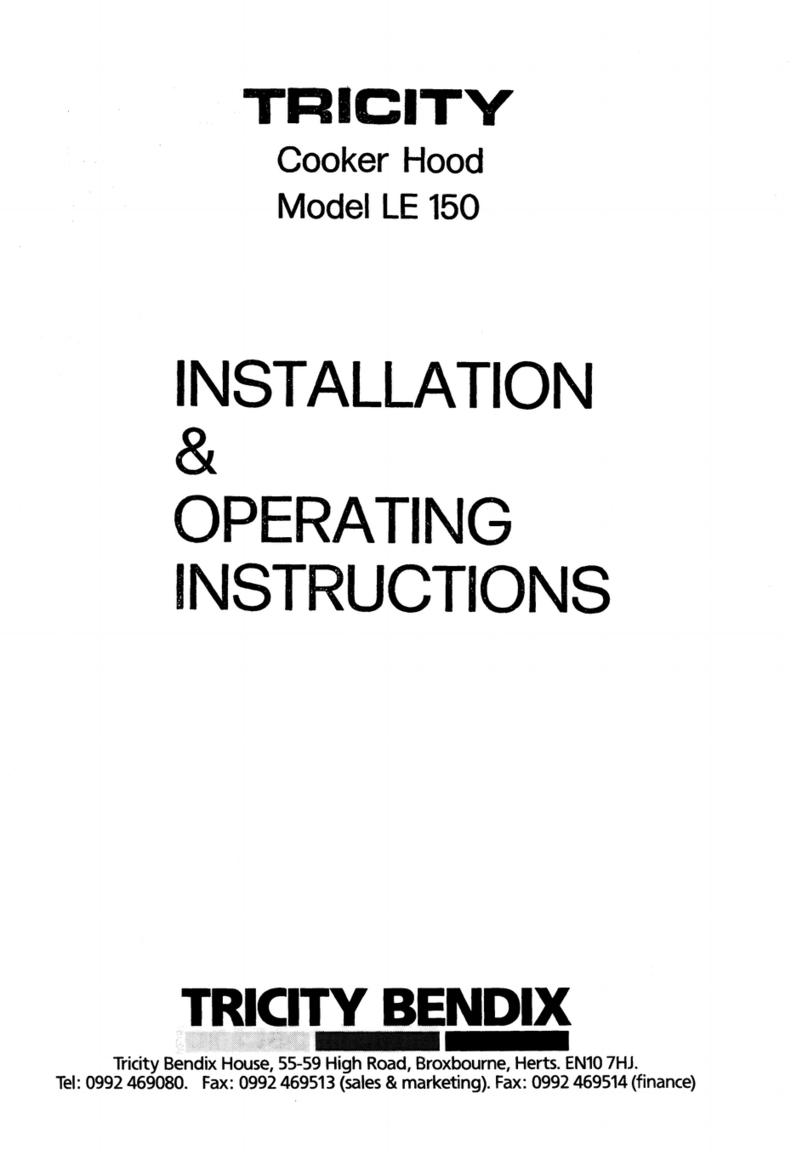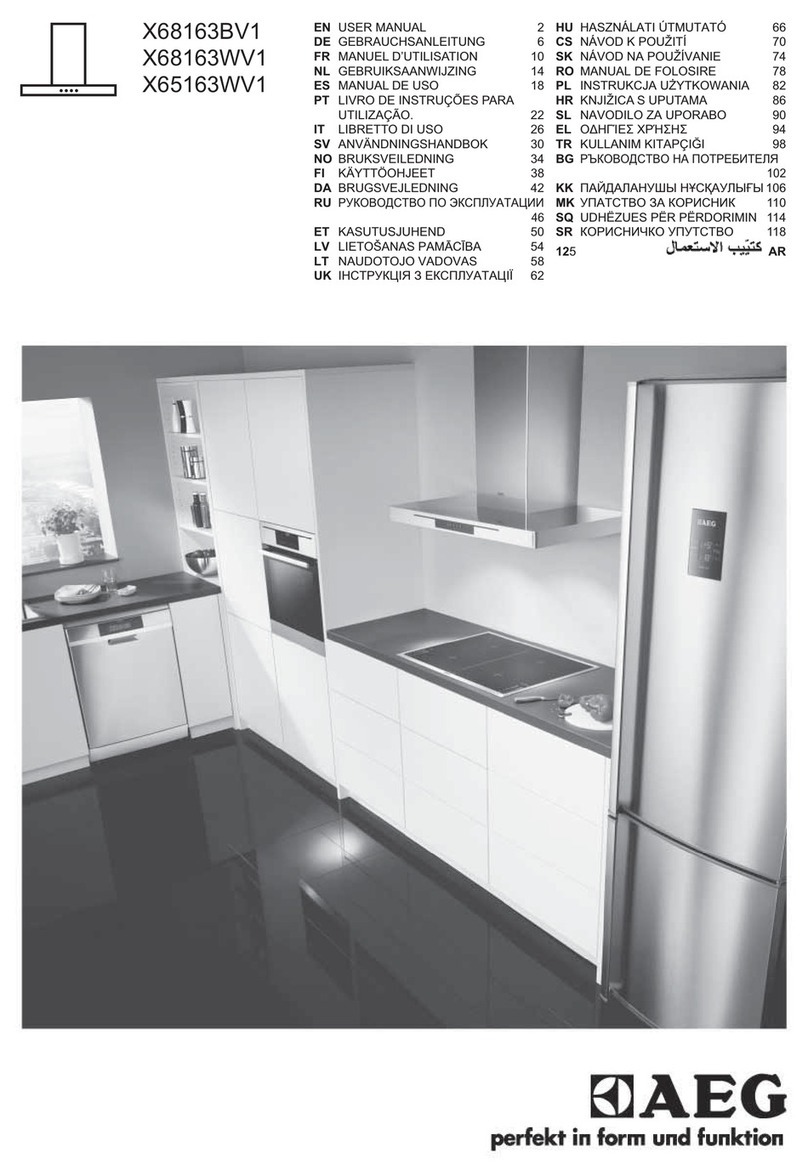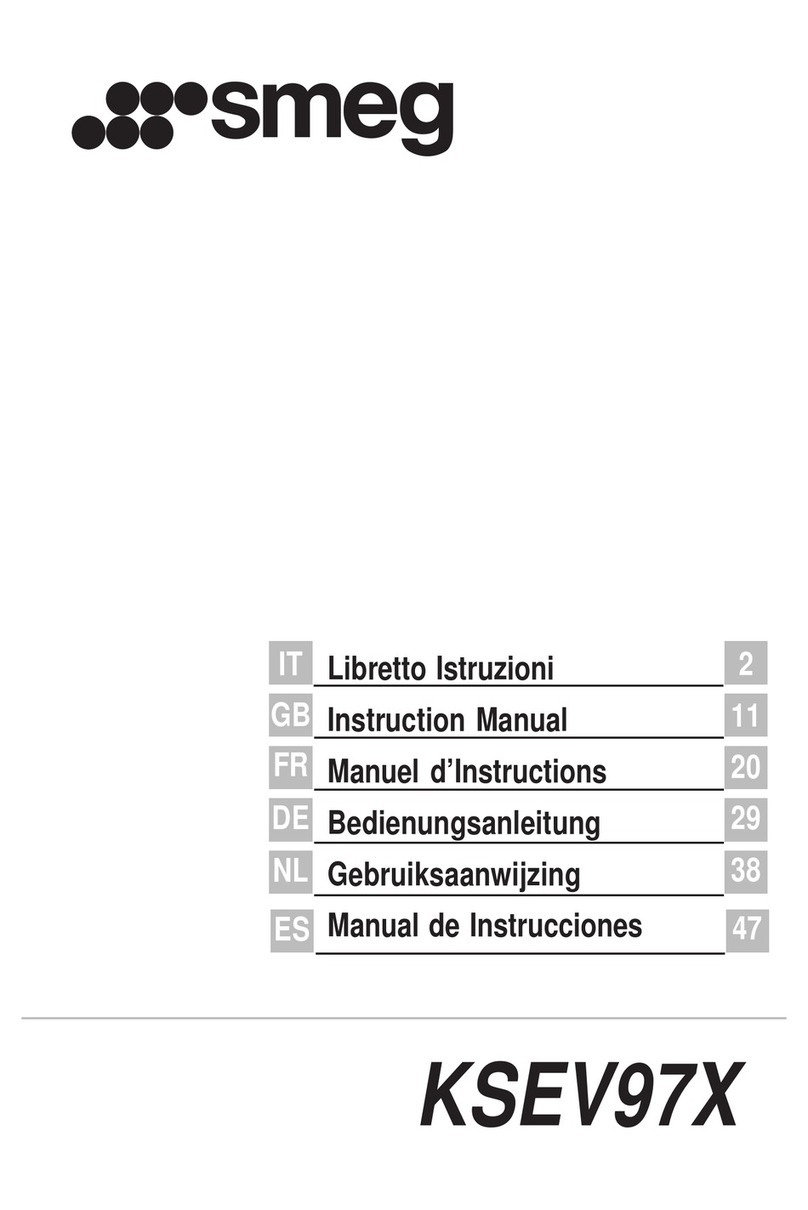
The manufacturer will not accept any liability for damages occurred during the applian-
ce handling/transport and installation operations.
Carefully read the following installation instructions , before installing the appliance.
Check that all the components are not damaged. In case of damages , please contact your
retailer and do not carry out installation.
- Use an air exhaust pipe of the shortest possible length , with a limited number of elbows,
and made in a certied material .
- Avoid drastic section changes (recommended constant diameter Ø 150 mm or similar
surface).
- The manufacturer will not accept any liability for air capacity or noise problems , should the
above instructions be ignored. The product will not be covered by our guarantee for problems
resulting from failure to comply with the aforementioned instructions.
All of the products have been designed with the possibility to direct the air out-let towards
the appliance rear side; in case you choose this option , you will need to remove the no. 10
screws found in the suctioning unit support (g. 3 ), pull the suctioning unit out and rotate it
in such a way as to direct the air out-let nozzle towards the appliance rear side (g. 4); then
ret the suctioning unit into place and tighten the screws previously removed.
With the help of the special drilling template (g. 5A), please drill the holes for the wall bra-
ckets .
The rear, lowest part of the appliance shall be placed at the following minimum distance from
the cook top:
SLTC93 minimum distance from the cook top: 495mm
SLTC94 minimum distance from the cook top: 500mm
SLTC95 minimum distance from the cook top: 450mm
SL96 minimum distance from the cook top: 600mm
SLTC97 minimum distance from the cook top: 650mm
Secure the wall brackets to the wall, by using the anchors and screws supplied with the ap-
pliance (FIG.6 A).
Hook the hood to the wall brackets previously xed (FIG. 6).
SLTC93 - SLTC94 - SLTC95 -SLTC97
Tighten the two screws into the wall bracket (g. 7 A ), which are necessary to make the
appliance adhere to the wall; then check that the hood is perfectly ush with wall, otherwise
act on the screws shown in g. 7 B, as follows tighten the screw if you need to lift the corre-
sponding side, or unscrew it in case you need to reduce the height.
Carry out the electrical connection, by using the appropriate power cord.
Only for SLTC93 and SLTC94 models: open the front panel by rotating the lower part upwards ,
as shown in (g. 8 and g. 9).
Remove the grease lter in order to reach the appliance inner side. The grease lter is remo-
ved by following the instructions given in the maintenance section.
Denitively secure the product to the wall by using the screws provided, as shown in g. 10.
Ret the grease lter and close the front panel.
7
INSTALLATION GB
7
The manufacturer will not accept any liability for damages occurred during the appliance
handling/transport and installation operations.
Carefully read the following installation instructions , before installing the appliance.
Check that all the components are not damaged. In case of damages , please contact your
retailer and do not carry out installation.
- Use an air exhaust pipe of the shortest possible length , with a limited number of elbows,
and made in a certied material .
- Avoid drastic section changes (recommended constant diameter Ø 150 mm or similar sur-
face).
- The manufacturer will not accept any liability for air capacity or noise problems , should the
above instructions be ignored. The product will not be covered by our guarantee for problems
resulting from failure to comply with the aforementioned instructions.
All of the products have been designed with the possibility to direct the air out-let towards the
appliance rear side; in case you choose this option , you will need to remove the no. 10 screws
found in the suctioning unit support (g. 3 ), pull the suctioning unit out and rotate it in such
a way as to direct the air out-let nozzle towards the appliance rear side (g. 4); then ret the
suctioning unit into place and tighten the screws previously removed.
With the help of the special drilling template (g. 5A), please drill the holes for the wall bra-
ckets .
The rear, lowest part of the appliance shall be placed at the following minimum distance from
the cook top.
Secure the wall brackets to the wall, by using the anchors and screws supplied with the ap-
pliance (FIG.6 A).
Hook the hood to the wall brackets previously xed (FIG. 6).
Tighten the two screws into the wall bracket (g. 7 A ), which are necessary to make the ap-
pliance adhere to the wall; then check that the hood is perfectly ush with wall, otherwise act
on the screws shown in g. 7 B, as follows tighten the screw if you need to lift the correspon-
ding side, or unscrew it in case you need to reduce the height.
Carry out the electrical connection, by using the appropriate power cord.
Remove the grease lter in order to reach the appliance inner side. The grease lter is removed
by following the instructions given in the maintenance section.
Denitively secure the product to the wall by using the screws provided, as shown in g. 10.
Ret the grease lter and close the front panel.
